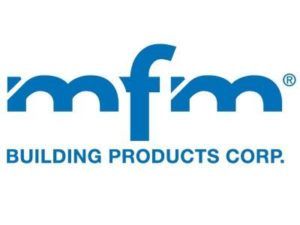Over the course of the last twenty years or so, there have been several methods used to make construction greener and more sustainable. For example, the use of solar panels and the integration of eco-friendly, biodegradable materials into building design have been tried and tested.
Within the construction industry, advances continue to happen as people look in closer detail at how buildings are created.
Environmentally conscious building, also known as sustainable construction, is an innovative idea that introduces more environmentally, socially and economically aware construction methods – and today NBS, the global integrated platform provider, are going to delve deeper into just what ‘environmentally conscious building’ is and what it can help achieve.
Why do construction methods need to improve?
As an industry, construction has a significant impact on the natural environment, economy, and society. As the industry grows, and materials become more limited and costly, traditional methods need to be adapted to keep them fit for purpose. Three critical areas of concern are energy, waste and CO2 production.
Globally, construction consumes almost 40% of total worldwide energy production, produces 30-40% of all solid wastes and between 35-40% of CO2. By using environmentally conscious building methods such solar technology, the industry can use new technologies and make the end design and structure far more sustainable.
In the UK, the construction industry is using sustainable construction techniques to help meet their target of reducing CO2 emissions by 50%, with 50% faster delivery and 33% lower costs from initial construction all the way through the life span of an erected building.
Techniques that are environmentally friendly
One of the main design techniques being adopted throughout the construction industry across the world is green building. Green roofs are often an aesthetic choice as well as a sustainable one, with the appearance of plants and flowers raising the building’s appeal to investors, workers, residents and visitors.
A good example of green vegetation-based roofing is the ACROS Fukuoka Prefectural International Hall. Greenery is placed on the slanted side of the building to enhance its beauty. An additional benefit is the way in which the building blends with its environmental surroundings while still using as much of the site as possible – improving the building’s long-term economic sustainability in the process.
Another environmentally friendly technique being explored involves building methods that enables skilled workers to create structures offsite and then transport them to the site location. Offsite construction typically takes less time, and less raw material may be needed to complete a project.
An example of this is Sunderland’s Northern Spire Bridge, where the majority of the concrete deck components were precast offsite. The decision was a positive step-change to casting the concrete parts onsite, which can often result in noise and mess, whilst requiring more workers and creating more waste in terms of time and materials.
Researchers are also looking into how they can adapt current materials to make them more sustainable. Universities tend to carry out this research, with Cambridge’s exploration of self-healing concrete a perfect example.
Project lifecycle
When looking at how to develop and use environmentally conscious techniques, many aspects hinge on whether they will be successful throughout the building’s lifecycle. This includes planning, design and construction through to building operation and maintenance – including refurbishment and even potential demolition.
Numerous factors can impact a building when looking at an asset’s operational stage – and who will use it and how. For instance, building users produce moisture, therefore, systems must be put into place to ensure efficient moisture removal.
The more organic material used in a building the more ventilation is needed, and this can lead to building financing issues. Therefore, a balance must be struck to ensure that guidelines are followed.
What happens after the building has served its purpose also needs to be considered. In the past, this stage of the lifecycle has often been overlooked, creating unanticipated difficulties during demolition.
Future of environmentally conscious building
As the construction industry has become more aware of the vital role it plays in wider society, sustainable approaches to construction have become more frequently used. These include walls that self-regulate indoor temperatures and buildings made from living trees such as the Citicape House in London, which incorporates the largest living wall in Europe.
In future, environmentally conscious methods such as the ones mentioned in this article could lead to a new and improved built environment. The possibilities are endless and could improve construction efficiency as well as provide economic gains and improvements to physical health.


























